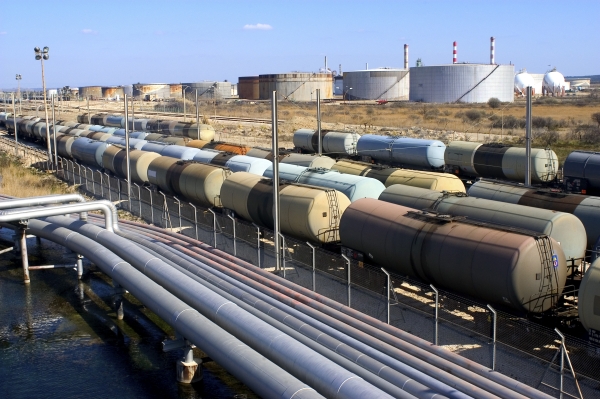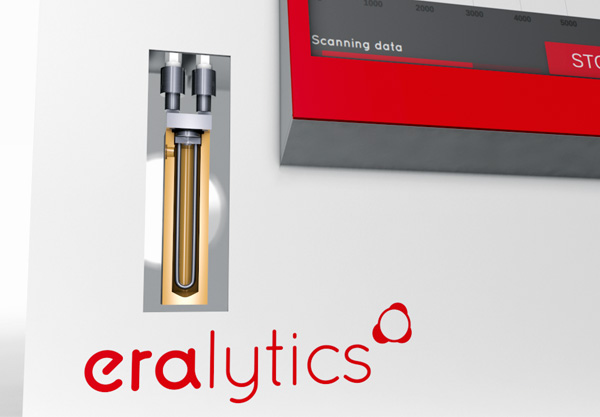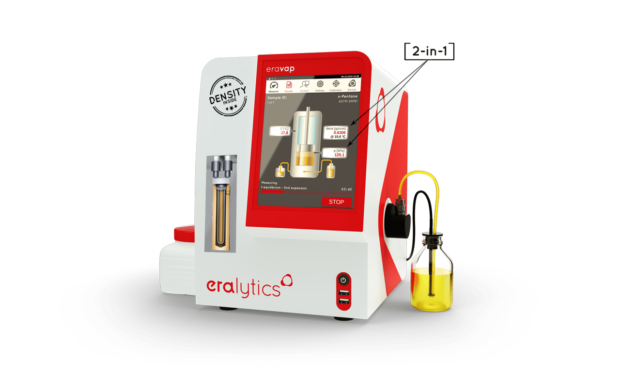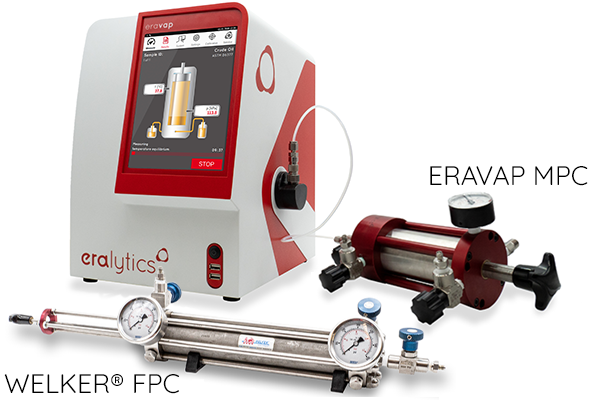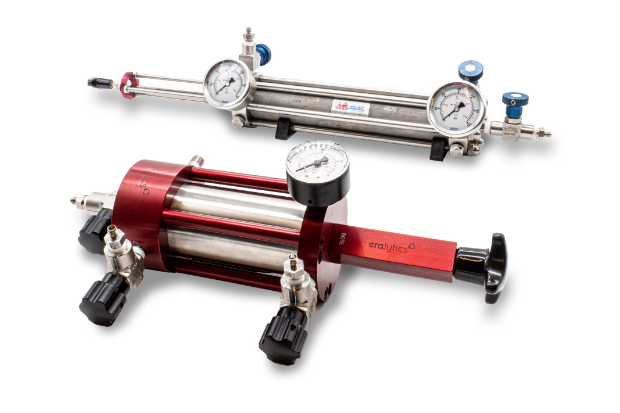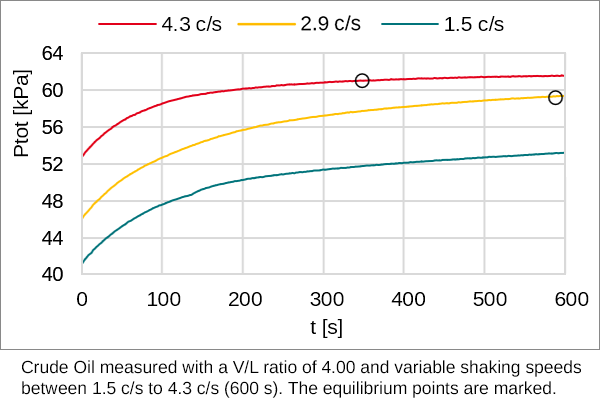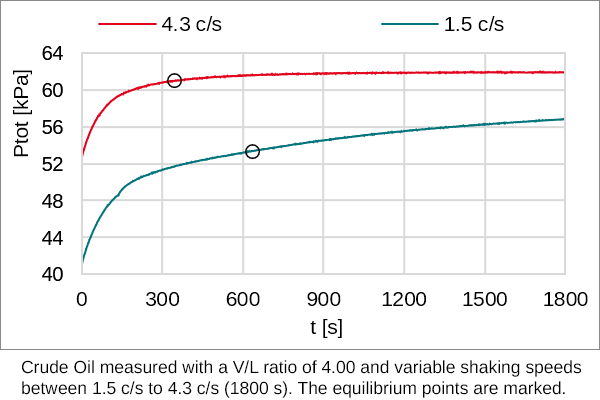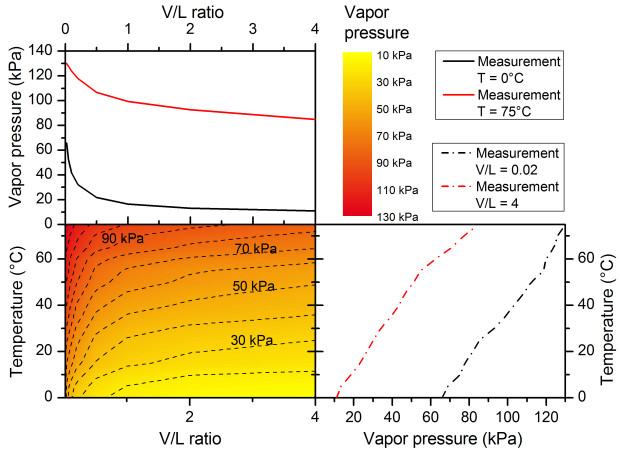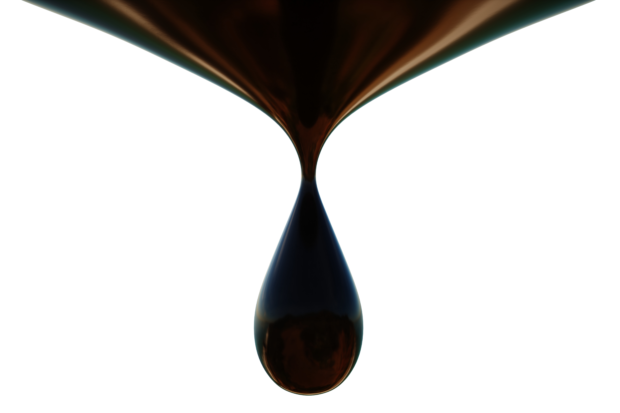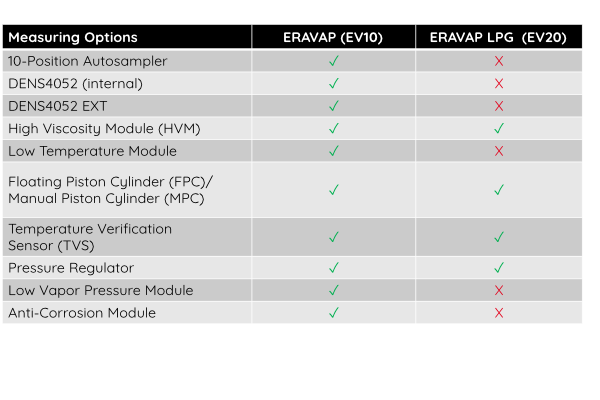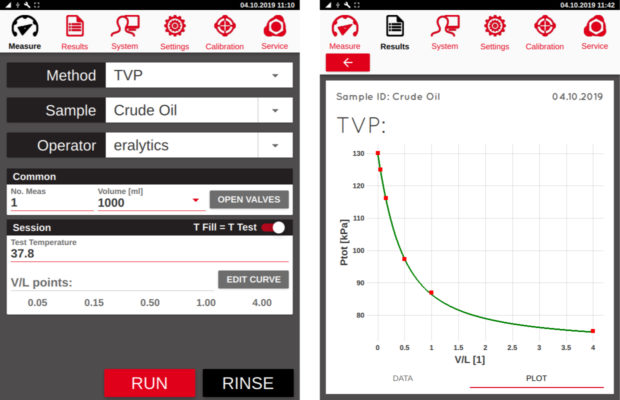Crude Oil Vapor Pressure and Density Testing at its Best
ERAVAP is the leading solution for high precision vapor pressure and density (ASTM D4052) testing of live and dead crude oils according to ASTM D6377, IP481 and GOST 52340. Its unique cell design allows high shaking speeds ensuring unrivaled accuracy and short measuring times. Additionally, special V/L ratio measurements, including the TVP (True Vapor Pressure) method are available.

